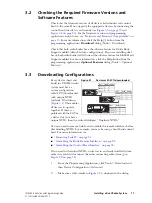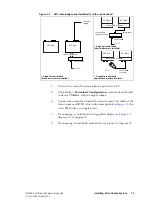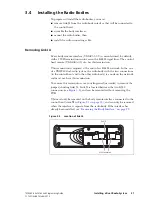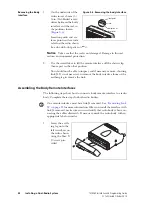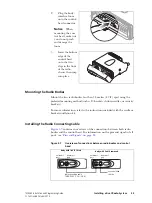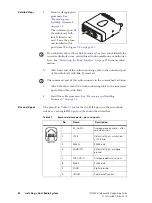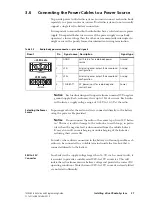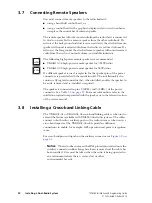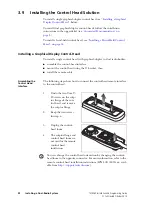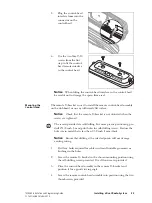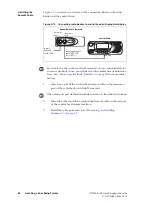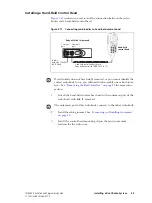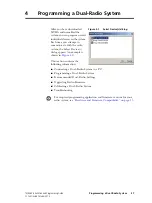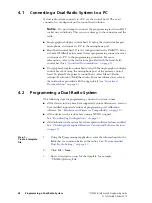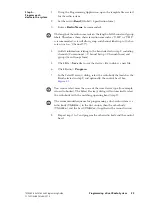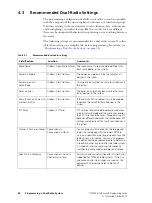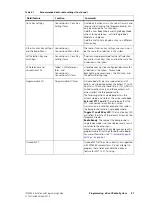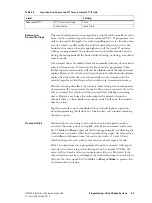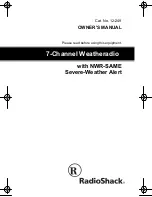
28
Installing a Dual-Radio System
TM8260 Installation and Programming Guide
© Tait Limited
October 2014
Standby Current
When using the ignition signal to turn off the radio system, the standby
current is reduced to <6mA. For detailed stand-by figures, see
Connecting the
Power Cable
Notice
Although it is possible to connect the radio system in line with
the vehicle ignition, this is not recommended, as it may draw too much
current and damage the vehicle wiring and steering column or ignition
switch. This may also cause the supply voltage of the radio to drop below
the specified level.
Notice
Disconnecting the vehicle’s battery may cause problems with
some electronic equipment, such as vehicle alarms, engine management
systems, and in-car entertainment systems. Check that the vehicle owner
has the necessary information to make all electronic equipment function
correctly after battery reconnection.
Notice
If the battery is not disconnected, exercise extreme caution
during the installation and install the fuses only when the installation is
ready to be checked. For more information, refer to
.
1.
Disconnect the vehicle’s battery unless specifically prohibited from
doing so by the customer, vehicle manufacturer, agent, or supplier.
Notice
Route the cables in a manner that minimizes coupling of elec-
tric vehicle systems such as alternators into the radio.
Notice
Protect the power cables from engine heat, sharp edges and
from being pinched or crushed.
2.
Run the power cable between one radio’s mounting position and the
power source and cut it to length, allowing approximately 20 cm
(8 in.) excess at the radio end.
3.
Plug the power cable into the power connector of the radio.
Table 3.4
Current drain for the various radio systems
Radio System
type
Completely off
(e.g. off via
ignition sense)
Stand-by (e.g. off
via on/off key)
On (no backlight)
but not
transmitting or
receiving
On (maximum
backlighting)
Dual body,
single head
<6mA
approx. 60mA
approx. 240mA
approx. 310mA
Dual body,
dual head
<6mA
approx. 60mA
approx. 300mA
approx. 425mA




